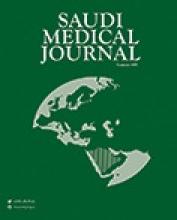Abstract
OBJECTIVES: To compare partial cross clamping and mechanic pulmonary ventilation technique with total cross clamping utilization during cardiopulmonary bypass in coronary artery bypass graft operations in terms of pulmonary healing.
METHODS: Between February and April 2007, isolated coronary artery bypass graft operation was performed for 30 patients in the Cardiovascular Surgery Department, Erzurum Regional Training and Research Hospital, Erzurum, and the Cardiovascular Surgery Department, Medical Faculty, Akdeniz University, Antalya, Turkey. The patients were divided into 2 groups; Group A (n=15) with total cross clamping, and Group B (n= 15) partial cross clamping and mechanic pulmonary ventilation in cardiopulmonary bypass.
RESULTS: Postoperative pulmonary functions were studied in 2 main data; 1) the oxygenization rate of artery blood gas, and 2) spirometer results. Additionally, total cardiopulmonary bypass and total cross-clamping times, extubation times, numbers and types of grafts, days of intensive care unit treatment, and hospitalizations were recorded. There was no statistically significant difference between the 2 groups for oxygenization rate, and surgery hospitalization details. We observed a statistically significant difference with advantage in Group B in spirometric results in terms of healing of pulmonary functions.
CONCLUSIONS: Total cross clamping and circulatory arrest of the lungs are the main sources of postoperative pulmonary complications based on the pulmonary inflammatory response in coronary artery bypass surgery.
- Copyright: © Saudi Medical Journal
This is an open-access article distributed under the terms of the Creative Commons Attribution-Noncommercial-Share Alike 3.0 Unported, which permits unrestricted use, distribution, and reproduction in any medium, provided the original work is properly cited.






